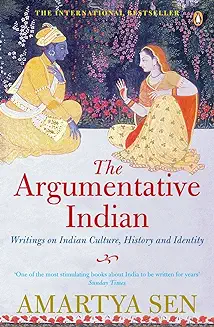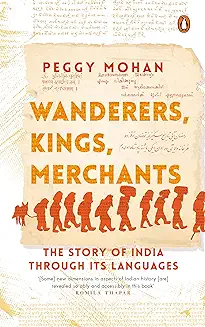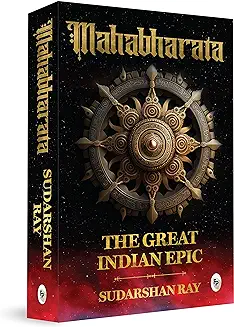6 Best Books on Indian History [August, 2024]
The rich history of India has fascinated people across the world with its tales of great kings, ancient civilizations, diverse cultures and grand empires spanning thousands of years. For readers keen to unravel this extraordinary legacy, several brilliant books exist analyzing the key events and figures constituting the long chronicle of the subcontinent. This blog comprehensively reviews some of the best books on Indian history throwing light on different intriguing aspects of India’s grand story.
The books discussed here make for an enlightening read into the currents of change shaping the land over countless generations. One gains insight on the rise and fall of dynasties ruling over India’s geography blessed in resources yet cursed with vulnerabilities like foreign attacks. From religious movements giving birth to pacifist philosophies to bloody conquests by imperial forces, the unwavering richness of India’s history never fails to astound. For anyone interested in the world’s largest democracy, these books reveal the formative phases leading upto modern India as we now witness it.
/ IN THIS ARTICLE [ hide ]
- Indians A Brief History of a Civilization by Namit Arora
- Argumentative Indian : Writings On India
- India: A History
- Wanderers Kings, Merchants : The Story of India through Its Langu...
- INDIAN HISTORY (Based On NCERT Books )
- MahabharataThe Great Indian Epic by Sudarshan Ray
- Comparison for Best Books on Indian History
- How to Choose the Best Books on Indian History
- Different Types of Books on Indian History
- Guide on Usage, Maintenance and Care
- Frequently Asked Questions about Best Books on Indian History
- Conclusion
1. Indians A Brief History of a Civilization by Namit Arora
![1. Indians: A Brief History of a Civilization by Namit Arora: Must Read on Indian Civilisation, Glimpse of History of Indian Culture, Non-fiction by Indian Author, Penguin [Hardcover] Arora, Namit](https://happycredit.in/cloudinary_opt/blog/indians-a-brief-history-of-a-civilization-by-nami-84nuy.webp)
Description
This book by Namit Arora provides a sweeping overview of Indian history and civilization from its ancient origins to the present day. The author synthesizes research from archaeology, genetics, and other disciplines to construct a narrative that includes details on the Indus Valley Civilisation, the Vedic age, the rise of Buddhism, art history, the Bhakti movement, Islamic rule, European colonialism and its impact, and events leading up to Indian independence.
Key Features
- Traces the entire arc of Indian history and culture across thousands of years
- Incorporates latest research from multiple fields like genetics and archaeology
- Covers major historical events as well as evolution of languages, literature, arts and more
- Includes glossary and detailed timeline for reference
Our Expert Opinion
This book stands out for its comprehensive yet concise coverage of Indian history spanning eras and disciplines. Namit Arora brings an analytical lens combined with engaging storytelling. For readers seeking an authoritative one-volume overview that synthesizes up-to-date scholarship on the extraordinarily rich and complex story of India’s past, this is perhaps the best book on Indian history available today. It more than lives up to its subtitle as a “must-read on Indian civilisation”.
2. Argumentative Indian : Writings On India

Description
This is a collection of essays by the Nobel laureate economist Amartya Sen where he applies his sharp intellect to analyze contemporary social and political issues in India. Sen discusses topics like the threats of narrow-minded nationalism, importance of democracy and public debate to human rights and capabilities and even India’s welfarist achievements.
Key Features
- Wide range of topics related to Indian society, politics and history
- Perspective of an eminent economist and public intellectual
- Insightful commentary on applicability of political philosophy theories
- Prose is lucid and accessible to general readers
Our Expert Opinion
While this book does not offer a systematic historical account, Amartya Sen’s learned and original perspectives make it one of the best books on Indian history and current affairs. His balanced scrutiny of complex themes succeeds in being non-polemical despite offering sharp criticisms at times. For readers seeking an edifying set of essays on understanding India by one of its most distinguished thinkers, this book delivers in spades.
3. India: A History

Description
Authored by eminent historian John Keay, this is an exhaustive single volume account of India’s history from early pre-historic times to the late 1990s. Keay traverses over five millennia incorporating details on empire-building, philosophy, religions, arts, science and key historical figures. The scope includes the Indus Valley civilization, Vedic religion, rise of Buddhism, Gupta golden age and much more leading upto the modern republic.
Key Features
- Comprehensive coverage spanning over 5,000 years
- Well-researched account of political, socio-cultural and economic history
- Descriptions of art, architectural and scientific achievements
- Segmented into accessible thematic chapters with detailed timelines
Our Expert Opinion
For readers looking for the whole sweep of Indian history encapsulated in one far-reaching narrative, John Keay’s formidable volume does a remarkable job of condensing its epic scale and complexity into a highly readable account. Meticulously covering an enormous canvas, Keay proves a sure-footed guide through the millennia. This monumental work clearly merits its reputation as perhaps the single best one-volume book on Indian history in publication.
4. Wanderers Kings, Merchants : The Story of India through Its Languages

Description
This highly engaging book examines the intertwined relationship between language evolution and India’s variegated history spanning thousands of years. Employing meticulous research, authors Peggy Mohan and Rajeshwari Pandharipande bring to life how developments in languages, cultures and political landscapes have constantly shaped one another.
Key Features
- Fascinating connections linking languages, cultures and history
- Coverage of classical and modern languages like Sanskrit, Urdu, Hindi, Hinglish etc.
- Analysis of impact of literature, arts, faiths, trade and demography
- Lucid and accessible writing appealing to general readership
Our Expert Opinion
For readers interested in a fresh perspective going beyond conventional political history, this book provides brilliant insights by exploring India’s rich linguistic heritage. By spotlighting languages as the vital medium tying together diverse societies across changing eras, the authors offer an original framing device to relate an compelling retelling of India’s grand story. This eloquent book easily ranks among the most imaginative and rewarding reads on Indian civilisation.
5. INDIAN HISTORY (Based On NCERT Books )
![5. INDIAN HISTORY ( Based On NCERT Books ) Includes Free Booklet [ TELUGU MEDIUM ]](https://happycredit.in/cloudinary_opt/blog/indian-history-based-on-ncert-books-includes-f-mlpizh.webp)
Description
This comprehensive guide covers the history portion from NCERT textbooks for aspirants preparing for UPSC and other competitive examinations. The content is presented in lucid Telugu along with practice questions, making it one of the best books on Indian history in Telugu. Topics span ancient, medieval and modern periods like Indus valley civilisation, Vedic age, Delhi sultanate, Bhakti movement, Mughal dynasty, advent of European powers and events up to Indian independence.
Key Features
- Based on material from official NCERT school textbooks
- Complete coverage of the history syllabus for UPSC and other exams
- Presented bilingually in simple English and Telugu
- Includes practice questions and free booklet
Our Expert Opinion
For students and aspirants looking to prepare for UPSC and other competitive tests, this guide stands out for providing comprehensive study material in Telugu covering the entire history portion from NCERT textbooks. The bilingual English-Telugu format, lucid text, revision questions and supplementary booklet make this one of the most useful books on Indian history available in the Telugu medium.
6. MahabharataThe Great Indian Epic by Sudarshan Ray

Description
This rendition of the ancient Indian epic brings its famed stories of gods, heroes and villains to life in simple English for modern readers. Author Sudarshan Ray focuses on retelling the main narrative in an accessible style for those unfamiliar with the voluminous original. The dramatic rivalry between Pandava and Kaurava princes culminates in the climactic Kurukshetra war with discussions of dharma and ethical conflicts.
Key Features
- Retelling of central Mahabharata stories
- Stories of Pandavas, Kauravas and other iconic characters
- Culminates in legendary war between rival clans
- Themes of dharma, ethics and philosophical questions
Our Expert Opinion
For readers seeking an abbreviated translation conveying the essential stories rather than the complete book, this straightforward rendition excellently summarises its grand narratives around the Pandavas, Kauravas and the War. The classic tale of family feud, throne succession and philosophical debates around ethics makes it one of the most renowned epics associated with Indian civilisation. This slim volume nicely introduces its highlights to new readers.
Comparison for Best Books on Indian History
| Book | Scope | Language |
|---|---|---|
| Indians: A Brief History of a Civilization by Namit Arora | Concise overview spanning eras | English |
| Argumentative Indian : Writings On India | Essays on contemporary India | English |
| India: A History | Comprehensive, over 5,000 years | English |
| Wanderers, Kings, Merchants | Languages linking history and culture | English |
| INDIAN HISTORY (Based On NCERT Books) | History syllabus for competitive exams | Bilingual English/Telugu |
| Mahabharata: The Great Indian Epic by Sudarshan Ray | Retelling of central stories and themes | English |
How to Choose the Best Books on Indian History
With India’s long and eventful past spanning several millennia, there exist countless books on Indian history catering to all sorts of interests and reading levels. When selecting the best books, first consider your needs and preferences.
Casual readers seeking an introductory overview can pick popular one-volume histories. Those wanting deeper scholarship can find specialized academic books analyzing narrower time periods, regions or themes. For preparation needs like civil services, suitable guides summarize relevant study material and syllabi.
Also weigh factors like author credibility in terms of expertise and research standards. Check if narrative styles match your reading tastes – academic, journalistic, witty or pedantic. Know if you prefer a sweeping birds-eye view or immersive accounts focused on specific eras like Mughal rule.
Don’t ignore reviews and recommendations from experts. Evaluating multiple perspectives leads to wiser choices when seeking the best books unraveling India’s rich historical legacy.
Different Types of Books on Indian History
Academic Histories: Scholarly accounts heavy on research and analysis like Keay’s India: A History, Thapar’s Early India or works from eminent historians like Irfan Habib, Romila Thapar, R.S Sharma etc.
Accessible Narratives: Single or multi volume histories focused on engaging storytelling like Luce’s In Spite of the Gods, Dalrymple’s The Anarchy or Arora’s Indians: A Brief History of a Civilization.
Textbooks: Standardized texts oriented towards students and competitive exam preparation like NCERT school books or prep guides for UPSC and state PCS tests.
Specialized Sub-Genres: Books centered around specific themes or periods like biographies of historic figures, independence movement literature, focused regional histories etc.
Literary Non-Fiction: Blend of history with author’s own experiences and interpretations like Pico Iyer’s India: A Million Mutinies Now, Mark Tully’s India’s Unending Journey etc.
Popular Stories: Fictionalized retellings of epics and lore like the Mahabharata or historical fiction novels dramatizing historic events for casual reading entertainment.
Guide on Usage, Maintenance and Care
Choosing Editions: Certain history books have revised editions bringing updated facts or modern viewpoints. Prefer latest editions for most current information.
Handling Rare Books: Some old books may be collectibles or out of print, hence handle gently and avoid markings. Maintain in dust jackets if available.
Storing Properly: Keep books away from direct sunlight, moisture and insects which can damage paper. Upright storage allows ventilation and prevents sagging.
Regular Cleaning: Gently wipe covers with dry cloth to remove dust. Do not apply polish or chemicals directly. Allow books to air dry if slightly wet, do not heat or freeze.
Creasing Spines: Avoid heavily creasing spines during use which can weaken binding over time. Open books fully when reading to limit spine damage.
Protecting Corners: While reading, avoid dropping heavy books or hitting sharp table corners which can dent edges of covers. Use bookmarks instead of folding pages.
Frequently Asked Questions about Best Books on Indian History
Q. Which is the best concise book covering entire Indian history?
For a single volume overview, John Keay’s India: A History provides unmatched coverage and detail spanning over 5 millennia in a remarkably readable account based on extensive research.
Q. Which author offers the most readable and engaging narratives on Indian history?
William Dalrymple has earned widespread acclaim for his fluid storytelling and vigorous prose recreating the sights and sounds of different eras in enthralling books like White Mughals or The Anarchy focusing on narrower timeframes.
Q. What are the best India history books dealing with ancient periods?
Books like Thapar’s Early India, Raychaudhuri’s Political History of Ancient India, Basham’s The Wonder That Was India and Keay’s chapters on ancient India offer richly detailed examinations of India’s first civilisations.
Q. Which book serves as the best quick introduction to Indian history?
For a brisk overview condensing India’s complex millennia-long history into a compelling summary, Namit Arora’s Indians: A Brief History of a Civilization covers the highlights across changing eras in a slim yet well-researched volume.
Q. What are some authoritative Indian history textbooks followed for civil services exams?
NCERT history textbooks from 6th to 12th standards along with India’s Struggle for Independence by Bipan Chandra provide foundational study material on Indian history tracks for UPSC and state PCS recruitment exams.
Q. Which history books are considered reliable references by experts?
Historians like Romila Thapar, R. S. Sharma, Irfan Habib, D. N. Jha and Burton Stein have produced seminal research on Indian history segments considered very credible. Student texts from publishers like NCERT and Orient Blackswan are also dependable references.
Q. What are some good readable books on Indian history in regional languages?
Publishers like Orient Blackswan, Vikas Publishing and Macmillan offer history books translated into common Indian languages. NCERT also provides history textbooks in Hindi, Urdu and local languages for school students.
Q. Which is the best book for understanding India’s independence movement history?
India’s Struggle for Independence by late scholar Bipan Chandra along with works by historians like Sekhar Bandyopadhyay comprehensively cover the freedom movement spanning crucial events, key figures, ideologies and British policies leading up to 1947.
Q. Are there any illustrated books bringing Indian history to life visually?
Some illustrated titles like Epics, Myths and Legends of India by Anu Kumar, Historical Atlas of India by Joseph E. Schwartzberg, Amar Chitra Katha comics and A Young Person’s History of India bring visual appeal to events through art, maps, sketches and graphics alongside text.
Q. What are some insightful Indian history books written by foreign authors?
India specialists like John Keay, Barbara and Thomas Metcalf, Abraham Eraly, Catherine Asher, Charles Allen, William Dalrymple, Stanley Wolpert, Arthur Llewellyn Basham and James Mill offer widely acclaimed analyses showcasing outsider perspectives blending with rigorous scholarship.
Q. Are there any Indian history books covering impact of languages and literature?
Yes, some unique history examinations have studied India’s past in the context of its rich language heritage as seen in The Story of India’s Languages by Peggy Mohan and Rajeshwari Pandharipande along with The Language of the Gods in the World of Men by Sheldon Pollock.
Conclusion
This blog helps readers discover some of the most well-researched and profoundly informative books throwing light on major events constituting India’s vast historical canvas spanning over five millennia. One gains perspective on epochs like early civilizations, Vedic age, Delhi sultanate, Mughal empire and colonial rule culminating into a sovereign republic declaring itself independent in 1947. The stimulating narratives equip enthusiasts with authoritative understanding of one of humanity’s oldest continuous cultures.

Product prices and availability are subject to change. Any price and availability information displayed on merchant's site at the time of purchase will apply to the purchase of these products. HappyCredit is a participant in the Amazon Services LLC Associates Program, an affiliate advertising program. As part of this program, we may earn commission from qualifying purchases made through the affiliate links provided on this website. We only promote products on Amazon that we genuinely believe are of high quality and value to our audience. The inclusion of affiliate links does not influence our editorial content or product recommendations. Our primary goal is to provide useful information and help you make informed purchasing decisions.
Certain portions of the text in this article might have been created using AI tools and subsequently edited by the author to improve the overall quality and clarity of the content for readers.
![6 Best Books on Indian History [August, 2024] 6 Best Books on Indian History [August, 2024]](https://happycredit.in/cloudinary_opt/blog/best-books-on-indian-history-c5osl.webp)









